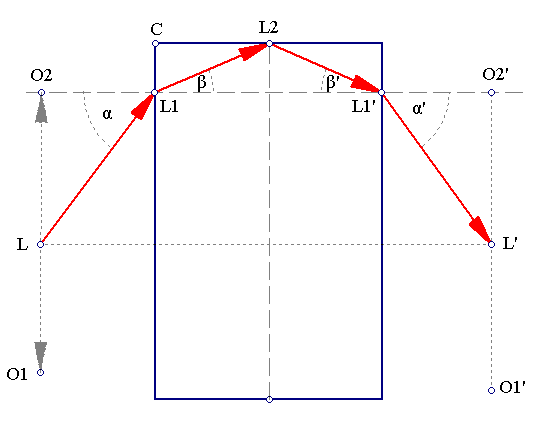

On Christmas Day one of the visitors brought as a gift to our household a bottle of Johnnie Walker whiskey. The bottle contained a beautiful rectangular prism, presumably to be used as a pres-papier.
The prism consists of high quality crystal/glass and has internally etched the figure of Johnnie Walker. The author was curious as to what it consisted of, so he set forth to measure its index of refraction.
All angles of the prism are 90° (and those which are not are not optical quality) so one has to employ some special tricks. The only things that were actually needed for the measurement were a laser pointer, a ruler and a piece of paper. The analysis can be summarized in the following diagram:

Let us follow the actual analysis:
A very interesting and beautiful little ornament. Measuring also the dimensions of the prism, we get H~8 cm, W~4.9 cm and L~4.9 cm, hence its volume is V~192 cm3. Dividing its weight, 480 gr, by the volume, we get the crystal's density, D~ 2.5 gr/cm3. Regular glass has a density of ~2.2 gr/cm3, so the ornament is indeed close to crown or flint glass.
The process used to manufacture this ornament is a scientific feat by itself:
As the author understands it, this particular type of internal engraving, uses multiple lasers which individually have power loads less than the damage threshold of the crystal (hence individually they cannot damage it). When used combined and focused on a specific point, the total power load exceeds the crystal's damage threshold, hence with very careful and accurate focusing a small three-dimensional matrix can be etched in the crystal's insides.